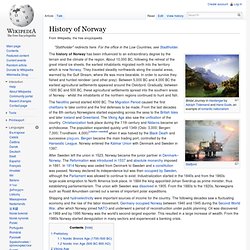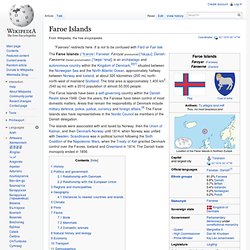

Norway. Norway ( i/ˈnɔrweɪ/; Norwegian: Norge (Bokmål) or Noreg (Nynorsk)), officially the Kingdom of Norway, is a Scandinavian unitary constitutional monarchy whose territory comprises the western portion of the Scandinavian Peninsula, Jan Mayen, the Arctic archipelago of Svalbard, and the sub-Antarctic Bouvet Island.

[note 1] Norway has a total area of 385,252 square kilometres (148,747 sq mi) and a population of 5,109,059 people. (01.01. 2014)[10] It is the 2nd least densely populated country in Europe. The country shares a long eastern border with Sweden (1,619 km or 1,006 mi long), which is the longest uninterrupted border within both Scandinavia & Europe at large. Delelinjen is part of the maritime border with Russia.[25] At this demarcation line's South end, Norway borders the Fedynsky natural resources field.[25] To its North lies the Central Barents field.[25] To its North lies the Perseevsky field.[25] Etymology[edit] History[edit] Prehistory[edit] Bronze Age[edit] Iron Age[edit] History of Norway. The history of Norway has been influenced to an extraordinary degree by the terrain and the climate of the region.

About 10,000 BC, following the retreat of the great inland ice sheets, the earliest inhabitants migrated north into the territory which is now Norway. They traveled steadily northwards along the coastal areas, warmed by the Gulf Stream, where life was more bearable. In order to survive they fished and hunted reindeer (and other prey). Between 5,000 BC and 4,000 BC the earliest agricultural settlements appeared around the Oslofjord. Gradually, between 1500 BC and 500 BC, these agricultural settlements spread into the southern areas of Norway - whilst the inhabitants of the northern regions continued to hunt and fish.
The Neolithic period started 4000 BC. After Sweden left the union in 1523, Norway became the junior partner in Denmark–Norway. Shipping and hydroelectricity were important sources of income for the country. Prehistory[edit] Nordic Bronze Age (1700–500 BC)[edit] Faroe Islands. Coordinates: The Faroe Islands (/ˈfɛəroʊ/; Faroese: Føroyar pronounced [ˈfœɹjaɹ]; Danish: Færøerne Danish pronunciation: [ˈfæɐ̯øːˀɐnə]) is an archipelago and autonomous country within the Kingdom of Denmark,[6][7] situated between the Norwegian Sea and the North Atlantic Ocean, approximately halfway between Norway and Iceland, at about 320 kilometres (200 mi) north-north-west of mainland Scotland.

The total area is approximately 1,400 km2 (540 sq mi) with a 2010 population of almost 50,000 people. The islands were associated with and taxed by Norway, then the Union of Kalmar, and then Denmark-Norway until 1814, when Norway was united with Sweden. Scandinavia was in political turmoil following the Sixth Coalition of the Napoleonic Wars, when the Treaty of Kiel granted Denmark control over the Faroes, Iceland and Greenland in 1814. The Danish trade monopoly ended in 1856. History[edit] More pertinent is the account by Dicuil, an Irish monk of the early 9th century. Geography[edit] Norway - Martin Gostelow. Norway: a few facts from Norwegian history and politics - Norwegian Council of Women. Folktales of Norway. Heimskringla: History of the Kings of Norway - Snorri Sturluson.
A History of Norway from the Earliest Times - Hjalmar Hjorth Boyesen, Charles Francis Keary. History of the Scottish expedition to Norway in 1612 - Thomas Michell.